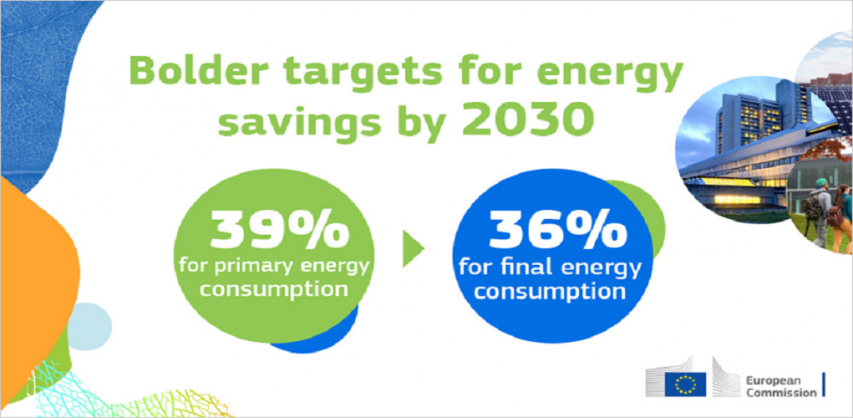Reduce primary energy consumption by 39% and final energy consumption by 36% by 2030, new EC targets

With the aim of reducing net greenhouse gas emissions by at least 55% by 2030 compared to 1990 levels and achieving climate neutrality by 2050, the European Commission has adopted on July 14 the package of proposals 'Delivering on the European Green Deal' to adapt EU policies on climate, energy, land use, transport and taxation. Within this new package of measures, the European Commission has published a proposal to recast the EU Energy Efficiency Directive.
The EC proposes a higher target for reducing primary (39%) and final (36%) energy consumption by 2030.
Following the partial revision of the 2012 Directive (2012/27/EC) in 2018 by amending Directive 2018/2002/EU, the proposal recasts the entire directive. It seeks to introduce a higher target for reducing primary (39%) and final (36%) energy consumption by 2030, up from the current target of 32.5%.
The new directive proposes to almost double the annual end-use energy savings obligations of Member States. The proposal focuses on sectors with high energy savings potential, in particular heating and cooling services, industry and energy, and places additional emphasis on the public sector as an example that can serve to lead the transition.
In the Renovation Wave strategy, the proposal includes measures to boost refurbishment in a way that also benefits society in terms of addressing fuel poverty and strengthening consumer empowerment.
New energy efficiency target for 2030
The European Commission estimates that the new targets should reduce primary energy consumption to 1,023 million tons of oil equivalent (mtoe) in 2030 and final energy consumption to 787 mtoe. Relative to the 2007 consumption projections on which the current 32.5% target is based, this equates to new targets of 39% and 36% respectively.
The proposal requires each Member State to determine its indicative national contribution on the basis of a formula of objective criteria and benchmarks, reflecting national circumstances. The Commission would then assess these and propose solutions to address any shortfall in the EU target.
The proposal also increases the obligation for Member States to achieve annual energy savings in final consumption. Currently, the obligation is set at 0.8% per year, but the proposal seeks to raise this figure to 1.5% from 2024, until 2030.
Future Emissions Trading System
The proposal now submitted seeks to include the transport and buildings sectors in the future Emissions Trading System, in addition to the EED drive to make these sectors more energy efficient. The EED proposal seeks to establish a new framework for heating and cooling, which accounts for 80% of energy use in buildings, with the aim of reducing emissions in buildings.
For businesses, the proposal aims to strengthen requirements in a targeted manner. Among other issues, the largest energy users (using more than 100 TJ per year) that do not yet have energy management systems in place will be required to do so in the future. For other companies, the obligation to have a four-year audit in the future will only apply to those using more than 10 TJ of energy per year.
On the other hand, the recast directive introduces specific energy saving measures for the public sector. These include the new obligation for the public sector to reduce annual energy consumption by 1.7% each year, the reinforced obligation to renovate 3% of the floor area of public buildings and the requirement to more systematically include energy efficiency requirements in public procurement procedures.
Other measures
The proposal to recast the EU Energy Efficiency Directive is linked to other proposals in the new package of measures put forward by the European Commission, in particular the revised Renewable Energy Directive, the Emissions Trading Scheme (ETS) and the new Social Climate Fund, the revision of the Effort Sharing Regulation that allocates enhanced emission reduction targets to each Member State and the Revision of the Energy Taxation Directive.
Together with the rest of the package, the proposal now goes to the European Council and the European Parliament to launch the EU decision-making process.